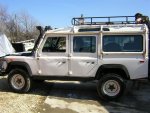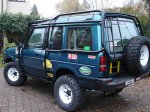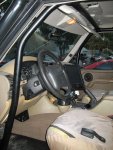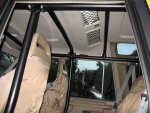Chucaro
Adventurer
We all know that if the Land Rover has one weakness is the body structure and protection for the passengers in case of a serious accident which are common in expeditions of the outback
I think that it would be interesting and for the benefit of all of us who drive a Land Rover vehicle regardless of the model, sharing our views regarding the need, effectiveness and type/design of roll cages that we prefer to fit in our vehicles. It can be based on our previous experiences or in the unfortunate experience of others.
Those who have been witness of vehicles involved in accidents can share with us their views of the need and effectiveness of the roll cage fitted in the vehicle in question.
There are two types of roll cages that come to my mind, the ones fitted inside of the cabin and the external cages which in many cases is incorporated in the roof rack.
In both cases we can review the ones with the components welded and the others which have the components assembled together by fasteners (bolts, nuts and roll pins)
The beautiful rig of Graham Jackson comes to my mind as an example of an external protection for the Defender.
An example of an internal roll cage can be seen in http://www.safetydevices.com/index.php?option=com_content&task=view&id=64&Itemid=64
Your inputs will be appreciated
Cheers
I think that it would be interesting and for the benefit of all of us who drive a Land Rover vehicle regardless of the model, sharing our views regarding the need, effectiveness and type/design of roll cages that we prefer to fit in our vehicles. It can be based on our previous experiences or in the unfortunate experience of others.
Those who have been witness of vehicles involved in accidents can share with us their views of the need and effectiveness of the roll cage fitted in the vehicle in question.
There are two types of roll cages that come to my mind, the ones fitted inside of the cabin and the external cages which in many cases is incorporated in the roof rack.
In both cases we can review the ones with the components welded and the others which have the components assembled together by fasteners (bolts, nuts and roll pins)
The beautiful rig of Graham Jackson comes to my mind as an example of an external protection for the Defender.
An example of an internal roll cage can be seen in http://www.safetydevices.com/index.php?option=com_content&task=view&id=64&Itemid=64
Your inputs will be appreciated
Cheers







